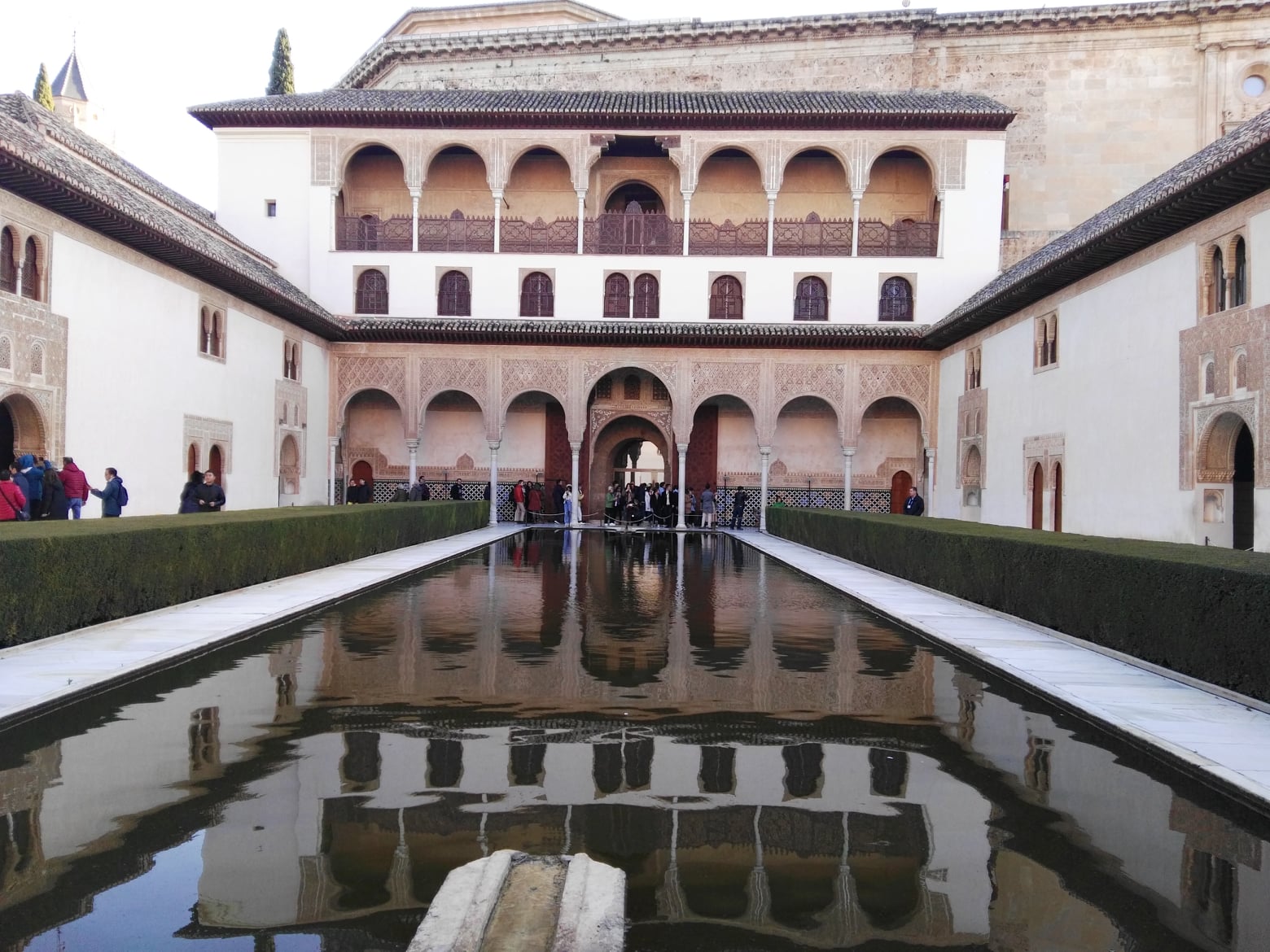
When visiting the Alhambra you’ll find 5 well differentiated areas and if you do it in this order, you’ll get a better idea of how it was built.
The citadel, the Nasrid Palaces, the Generalife, the Palace of Carlos V and the rest of the Alhambra complex where you’ll be able to see; the Woods, the Carmen de Los Mártires, Torres Bermejas, the Rodríguez Acosta Foundation, the Ruins of the Abencerrajes Palace, the National Parador of San Francisco, the Arab Bath in the Mosque and the Church of Santa María de la Alhambra.
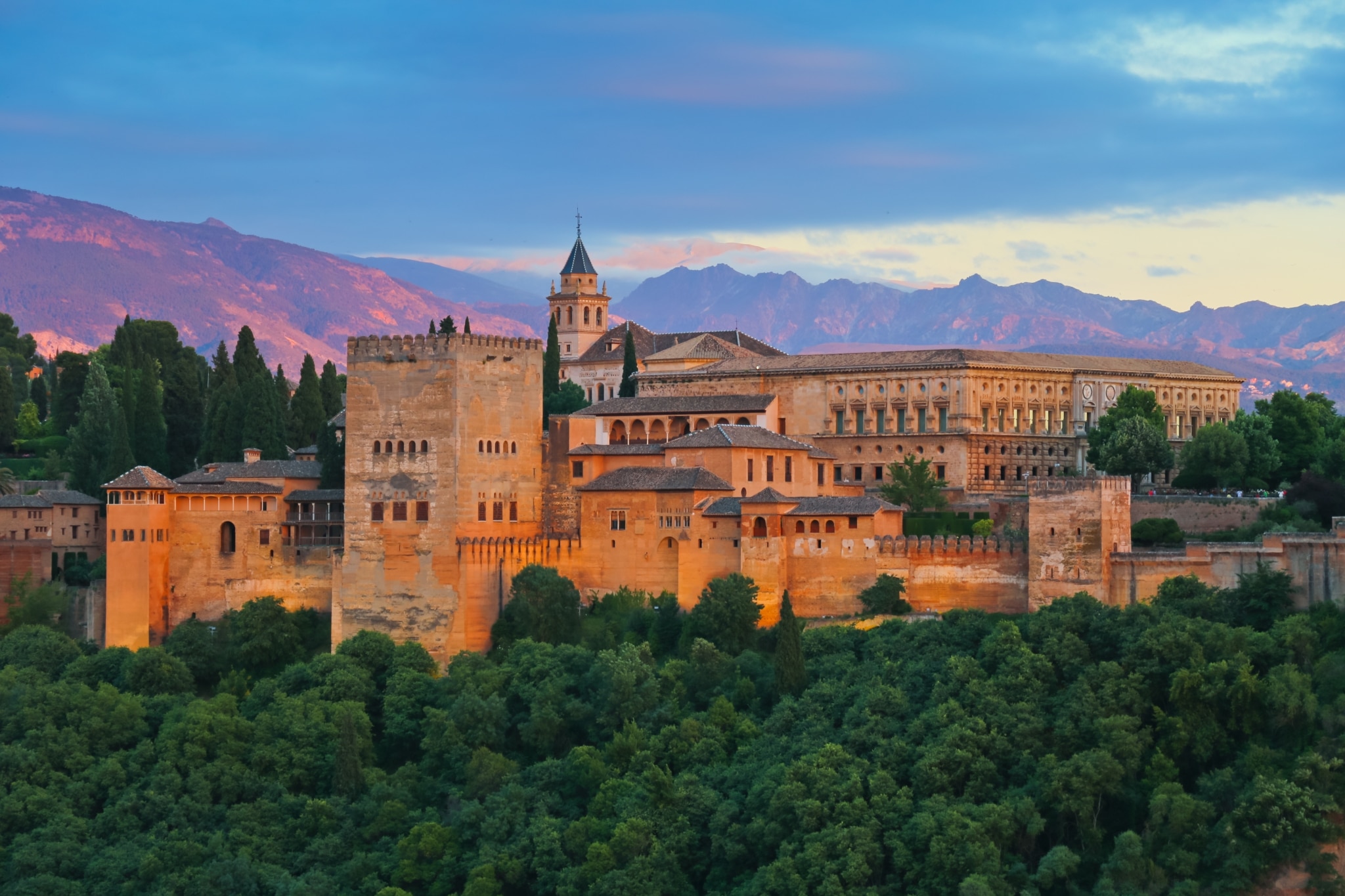
You need a ticket to visit the first three and the Rodríguez Acosta Foundation. It’s best to buy one in advance as it’s not always easy to find your preferred time for entrance to the Nasrid Palaces, so we recommend booking early.
The beginning of the construction of the Alhambra takes place when the first Nasrid sultan, Mohamed I, arrives from the city of Arjona (Jaén) in 1238. He decides to build a new fortress outside the Albaicín, the Islamic city since the Zirí foundation. The building of walls begins on the Sabika Hill, on the other side of the Darro river, starting with the Vela Tower, with its impressive dimensions, dominating the views over the entire Vega (Plain) de Granada and the Albaicín.
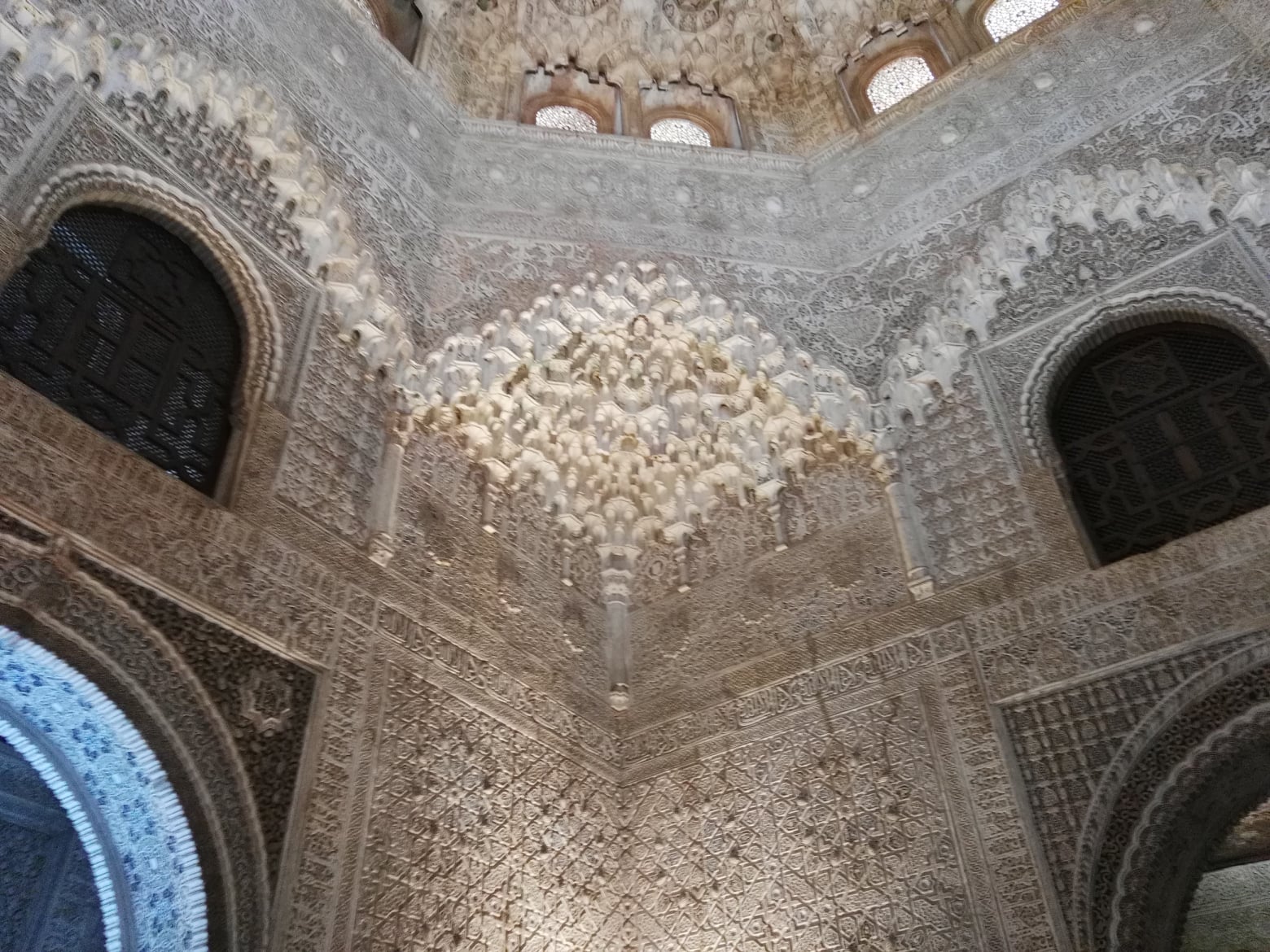
Each of the following 22 sultans (In total 23,) 11 Muhammad, 5 Yusuf, 2 Ismail, 1 Nasar, 1 Saad, 1 Mulhacen - Muley-Hassan, 1 Zagal, 1 Boabdil, built complete palaces. Others a tower, others modified some buildings or palaces, until in 1492, the last Nasrid king Boabdil, after ten years of war, handed over the keys to the city to the Catholic Monarchs. He went into exile in the Alpujarras, but a year later, his beloved wife Moraima died and was buried in the Hamlet of Mondújar in the Lecrín Valley, he left the peninsula to go to Africa where he lived his last days and was buried in the city of Fez.
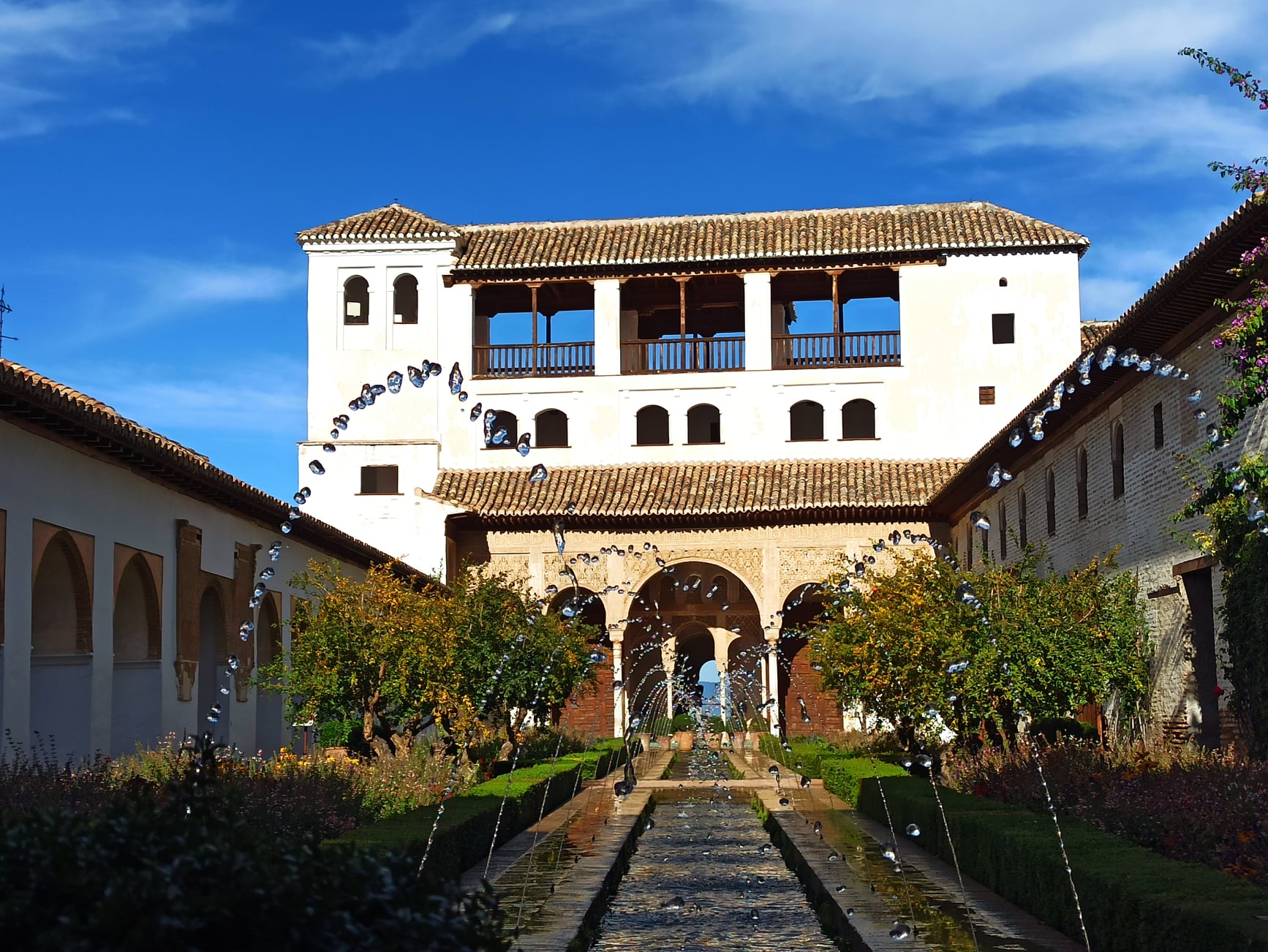
The following were the most significant rulers:
In 1314, the fifth sultan Ismail I began his reign, he reigned until 1325 and the building of El Mexuar and part of the Generalife are attributed to him.
The Mexuar (Oratory) is the first building one enters when visiting the Nasrid Palaces. Here you’ll see, as a curious detail, the coat of arms of the Catholic Monarchs, Isabel and Fernando. They (mainly the Queen) were involved with the Moorish builders in the reconstruction of the palaces, very deteriorated after the long years of siege and civil wars between the sultans.
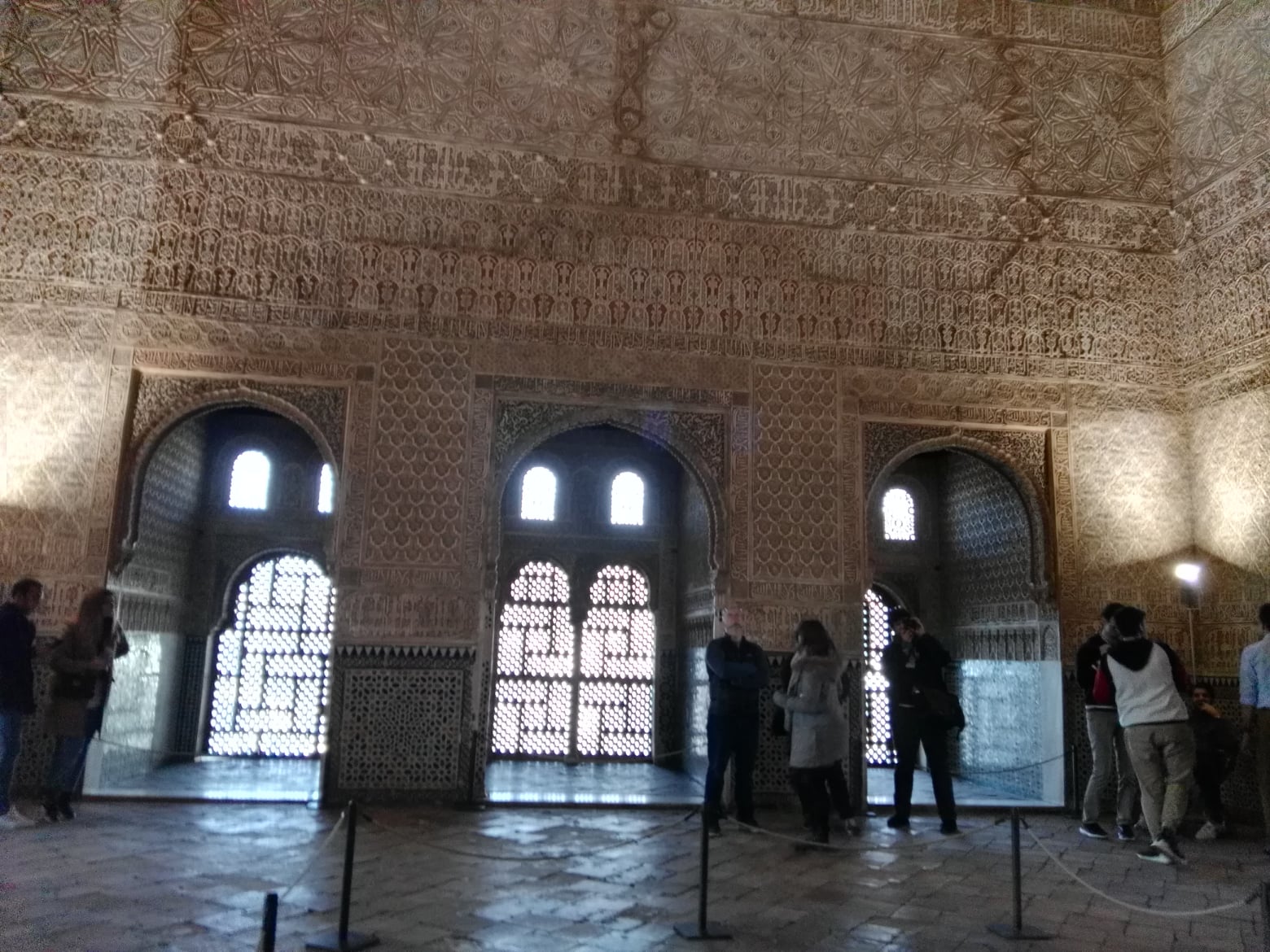
The Generalife is located higher up on a hill in an easterly direction to the Alhambra and was used as recreational gardens and orchard for the City of the Alhambra. It is worth highlighting the irrigation system and channeling of the waters for its fountains.
The seventh sultan was Yusuf I, he began his reign in 1333 to 1354 and is the builder of the Comares Palace (Tower, adjoining buildings, Patio de los Arrayanes and Bath) and the Puerta de La Justicia.
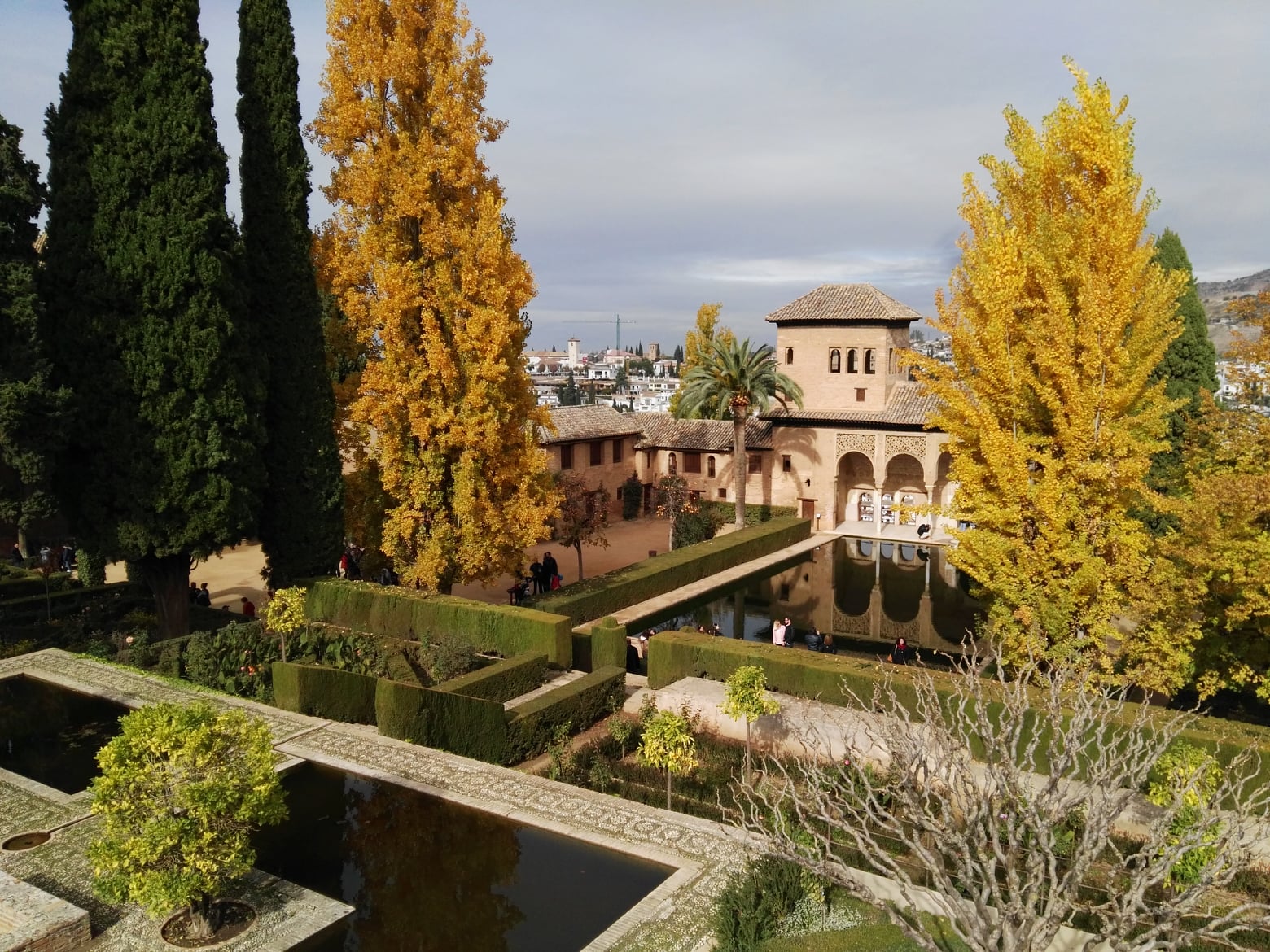
The Comares Tower is the most impressive of the Alhambra due to its extraordinary dimensions, it is 45 metres tall, the windows that illuminate its interior are strategically located, to thrill visitors. The measurements of the Tower and the Patio de los Arrayanes keep to the measurements of the golden ratio. This room called the Ambassadors Chamber, was where the sultan received his visitors and it is understood that he tried to impress them with ostentation and power.
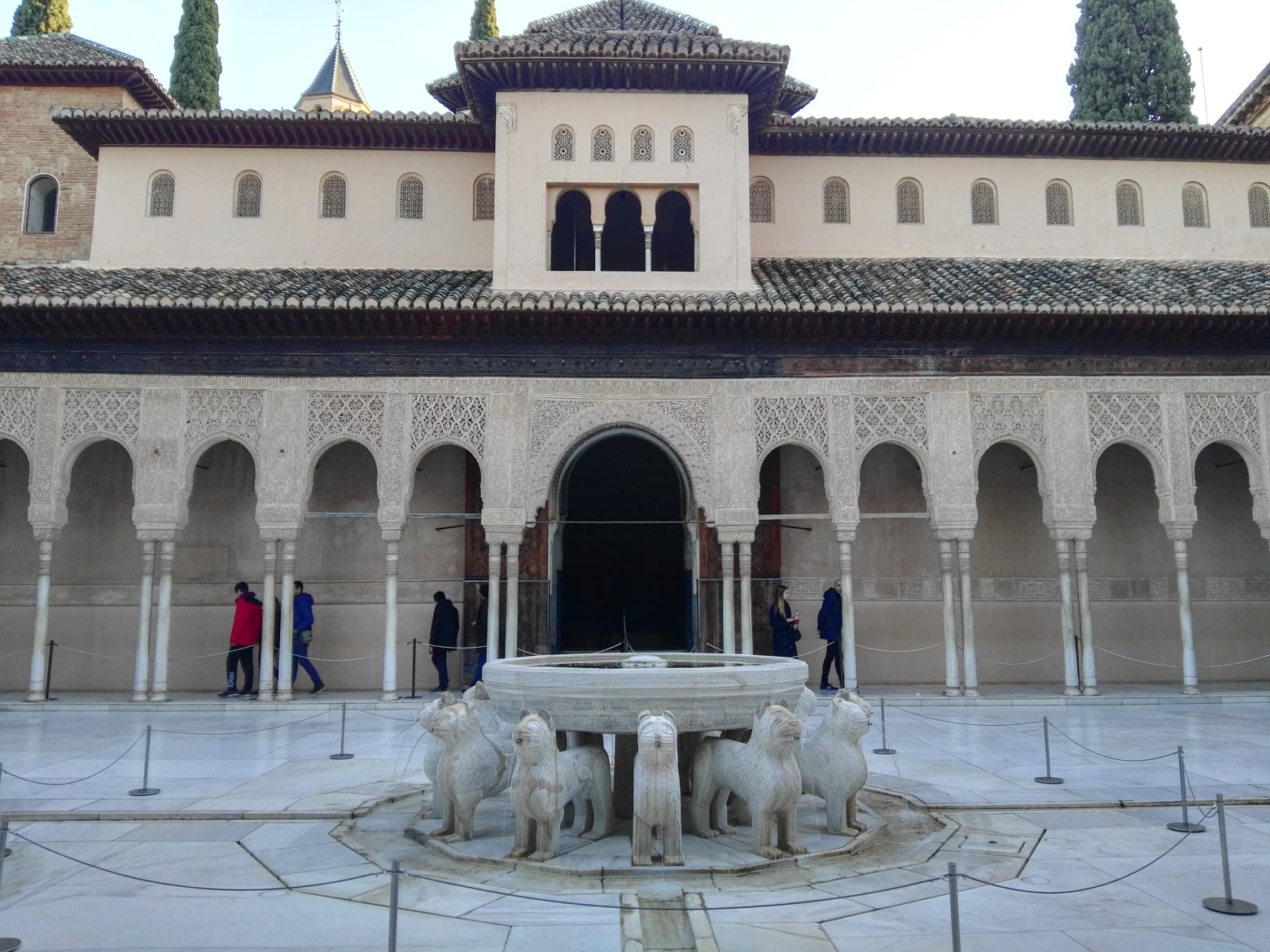
Tradition has it that it was in the Hall of Ambassadors where the Queen received Christopher Columbus with his project, and that here she gave him sufficient resources for his undertaking to reach the East Indies, discovering a new world on October 12, 1492; The Americas.
Sultan Muhamed V reigned twice, beginning in 1354 to 1359, the year in which he was displaced by a palace conspiracy. Supplanted by Ismail II, puppet king of the instigator of the conspiracy, Muhammad VI el Bermejo. He was assassinated by Pedro I of Castile who restored the legitimate Muhammad V, who reigned again from 1362 to 1391. He was the one who ordered the construction of the Patio de Los Leones.
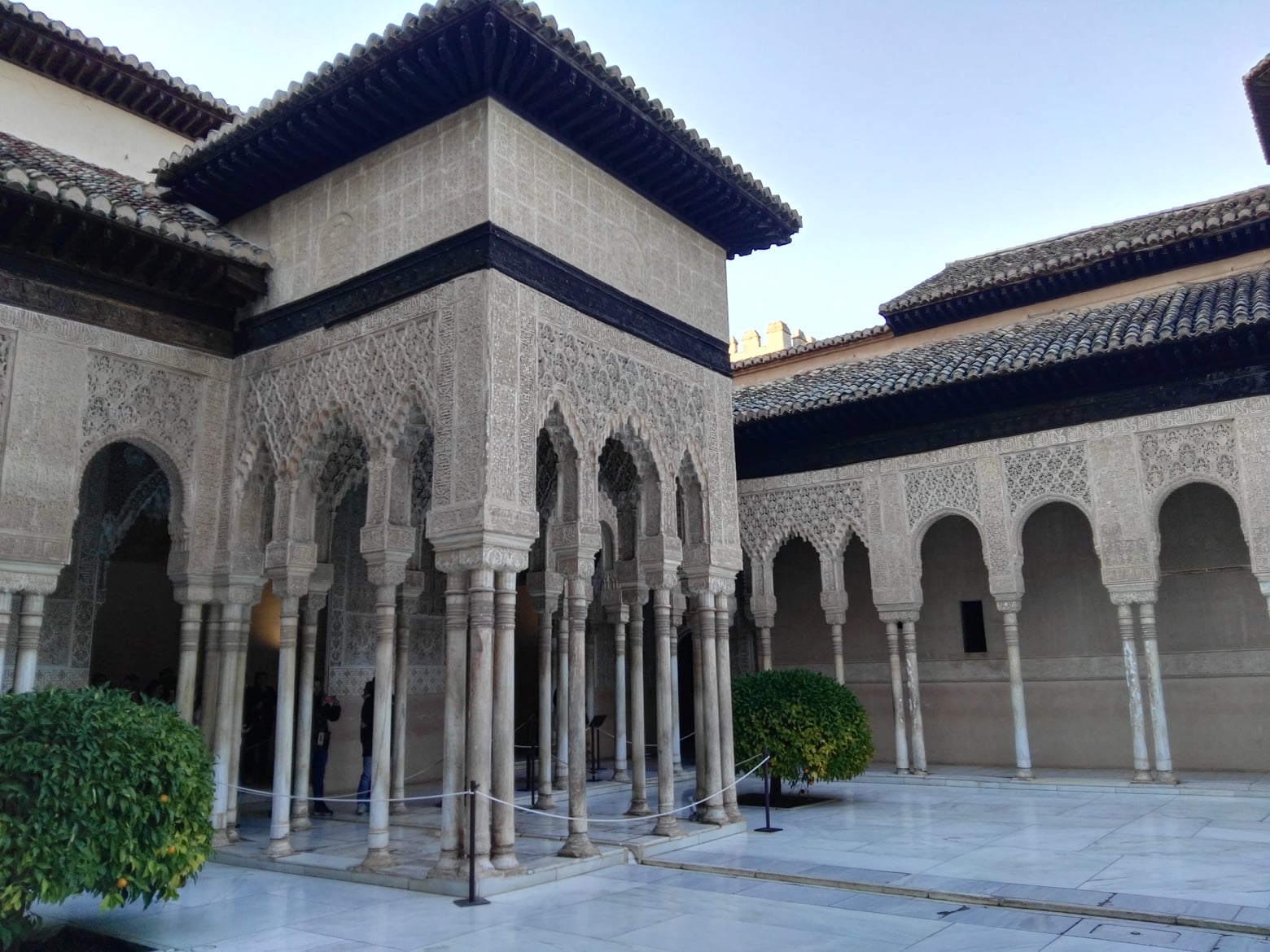
The Palace of the Lions with the main buildings it includes (Sala de Mocárabes, Sala de Abencerrajes with the Harem, Salas de Los Reyes, and Sala de Dos Hermanas with Ajimeces and Mirador de Lindaraja, all of them surrounding the magnificent Patio de Los Leones ) are the culmination of Nasrid architecture. Construction began in 1377 and lasted 13 years. It consists of a rectangular patio with the fountain in the centre, supported by 12 lions and a perimeter gallery joining the four chambers supported by 124 white marble pillars each with different decorated capitals.
The four surrounding chambers are: The Hall of the Abencerrajes, The Hall of Los Reyes, the Hall of Dos Hermanas and the Hall of the Mocárabes.
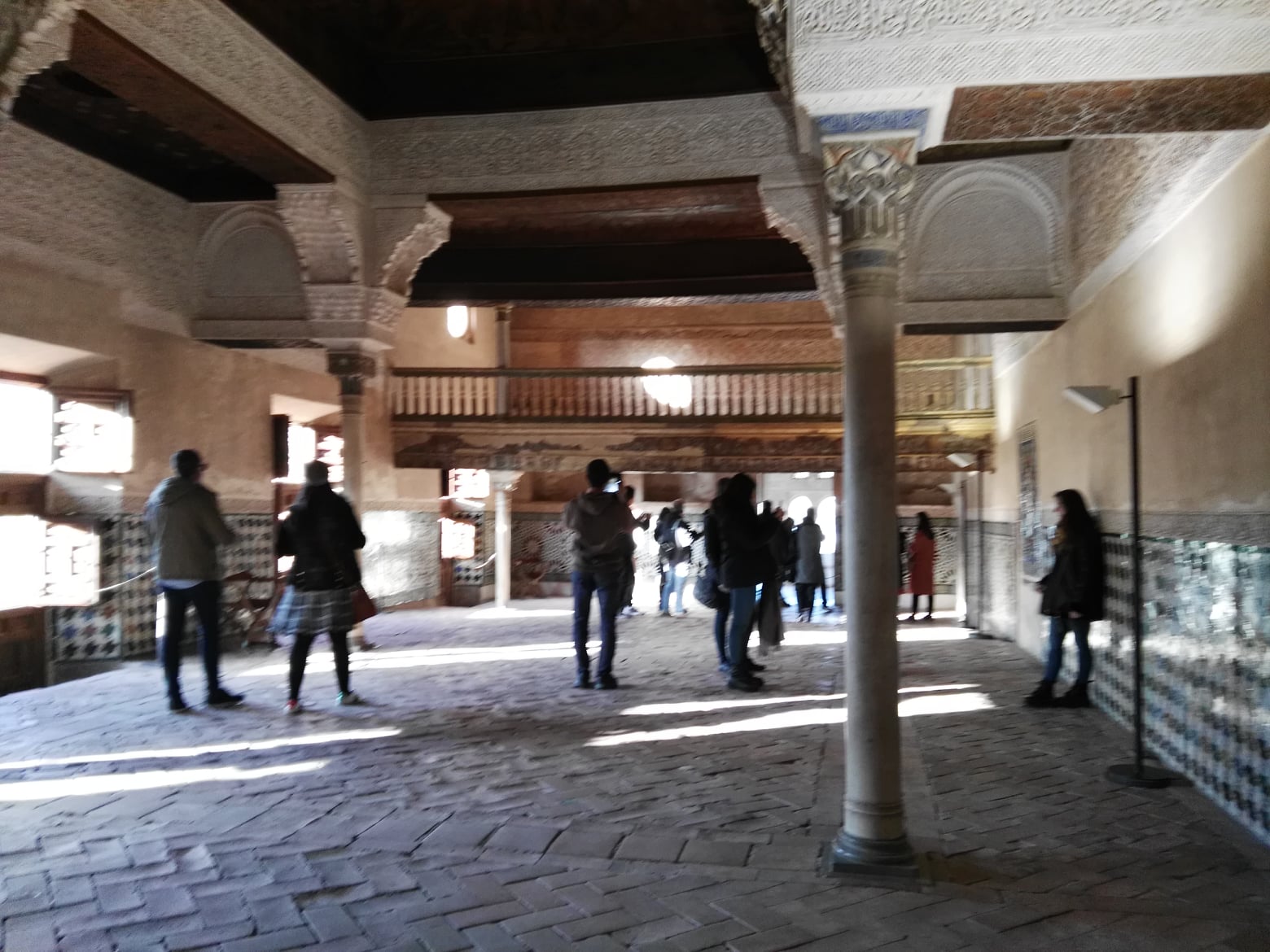
It is worth highlighting in this gallery and in the four palaces, the painstaking Nasrid decoration with epigraphy (Kufic and cursive), the plasterwork with flower and fruit ornaments –atauriques- the ornaments of the vaults –mocárabes-, the loop carpentry, art to capture prayer and poetry in praise of God and the Sultan, the atauriques, the muqarnas and the psalms or poetry written on its walls, all praising their God and telling of the power of the sultan.
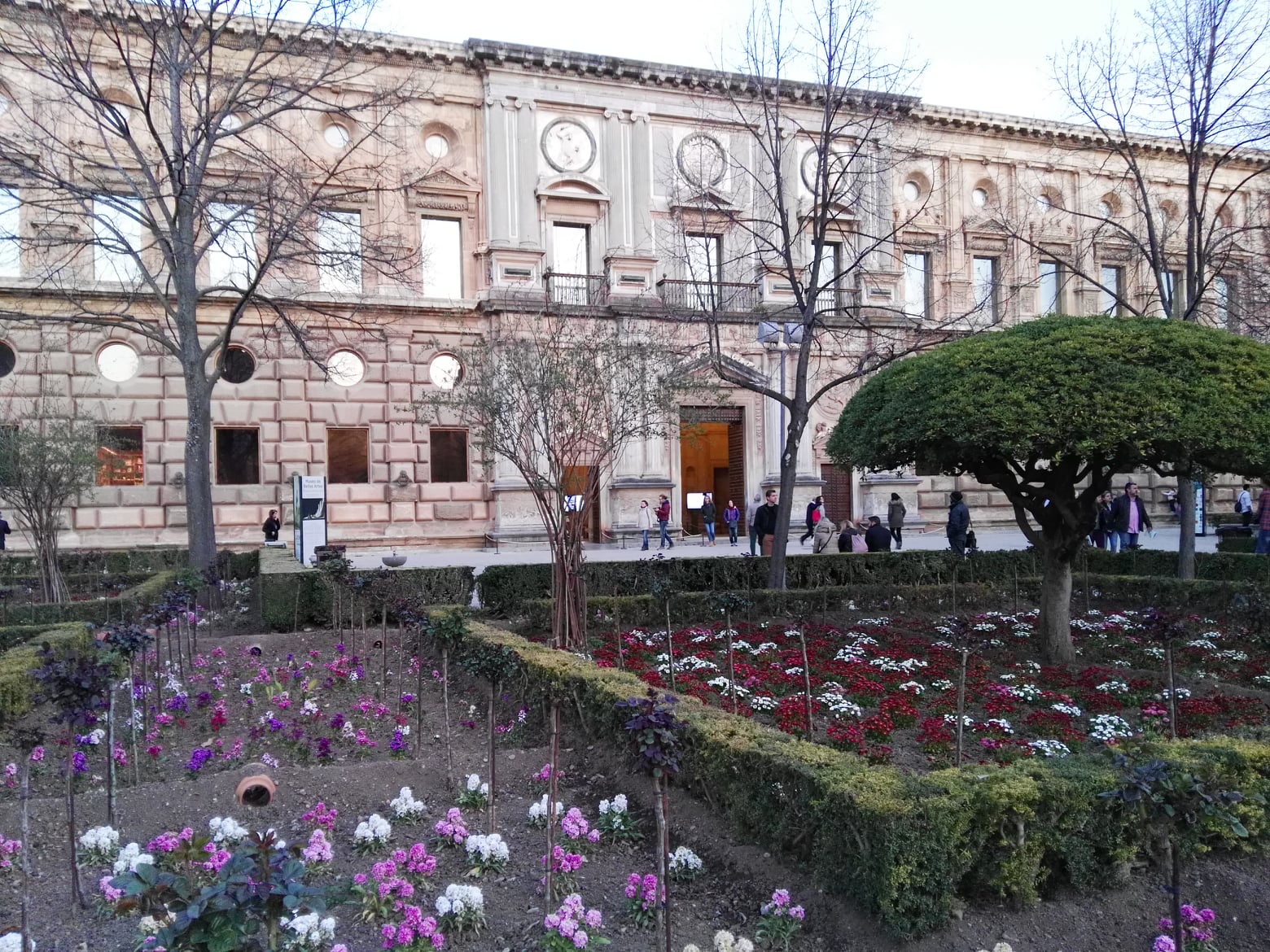
The palace of Carlos V was ordered by this emperor to be built in the centre of the Alhambra, after his wedding with Isabel of Portugal in 1526. They lived for several months in the Nasrid palaces and liked it so much he decided to establish his court there. He entrusted the project to Pedro Machuca. Some buildings of little value had to be demolished, among which we highlight the rooms behind the conserved galleries enclosing the magnificent Patio de los Arrayanes, in front of the Torre de Comares. After several delays it was finished in 1637 but without roofing. Renaissance in style, it has the originality of being square on the outside and circular inside. Today it houses the museums of La Alhambra and the Museum of Fine Arts of Granada.
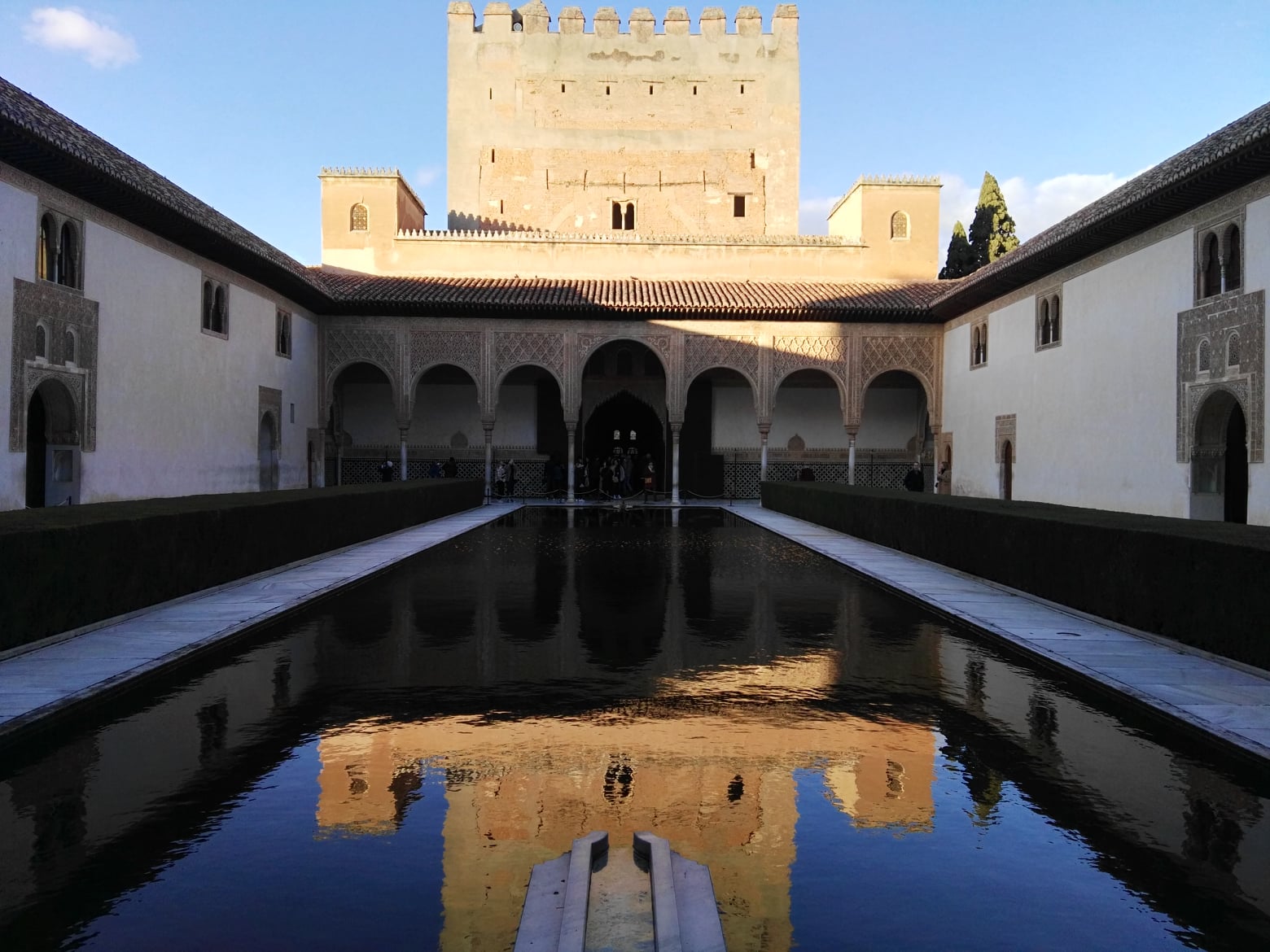
For the best holiday in the Lecrín Valley, remember that on the Lecrín Valley Tourism website you can book your accommodation, your activities or your restaurant directly with the owners. Who better to help you plan everything? And without any commissions!
GO TO BLOG
